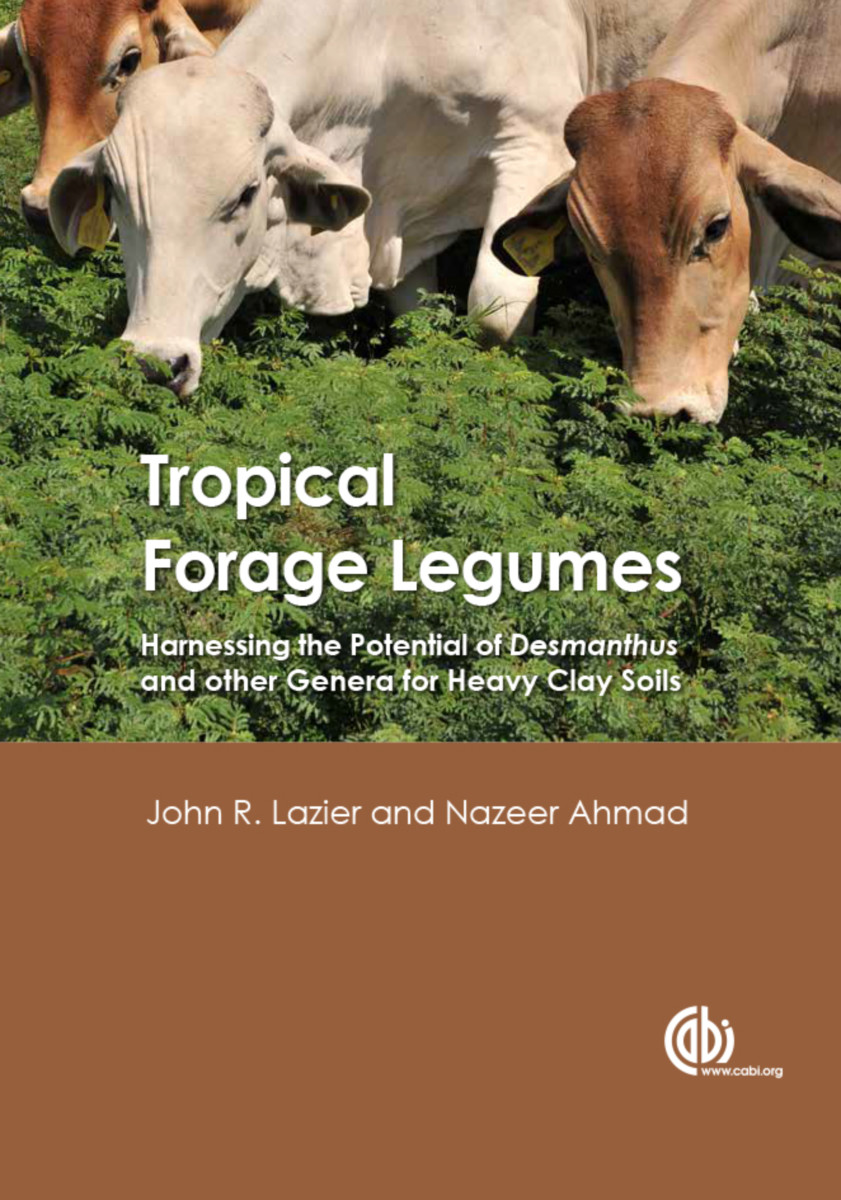Tropical Forage Legumes
Harnessing the Potential of Desmanthus and Other Genera for Heavy Clay Soils
- Publisher
CABI - Published
31st August 2016 - ISBN 9781780646282
- Language English
- Pages 480 pp.
- Size 6.75" x 9.5"
- Images tables, figures & color photos
This book explores the importance of heavy clay soils to agricultural productivity in the tropics and subtropics and the identification of adapted, productive forage legumes for this environment. Covering over four decades of research, Tropical Forage Legumes:
• Includes a detailed analysis of the forage germplasm available which is adapted to heavy clay soils
• Covers the evaluation of successful native and exotic forage legume species that have potential for Belizean soils, and the adaptation of a wide range of forages on Australian clay soils
• Explores the genetics of the most promising genera, Desmanthus and Stylosanthes, and looks at the results from countries where genotypes have been found both productive and persistent
• Makes recommendations for future research.
1. Providing pasture and ley legumes for use on clay soils in tropical and subtropical environments—N. Ahmad, R.L. Burt and J.R Lazier
2. The collection and initial evaluation of a wide range of pasture legumes from Mexico, Belize
and Guatemala: Implications for genetic resource development for tropical countries—J.R. Lazier, and R.L. Burt
3. The cattle industry of Belize. A brief history of research and development to the mid 1970’s—J.R. Lazier
4. Single plant trials of potential forage legumes for Belizean pastures on soils of the Upper Belize River
and the Lowland Pine Ridge—J.R. Lazier
5. Forage legume adaptation strip trials in Belize—J.R. Lazier
6. Botanical composition and nutritive value of selected native pastures in Belize—J.R. Lazier and M. Long
7. Initial screening for persistence and productivity of 20 promising native and exotic pasture legume species in two productive contrasting forage grasses in Belize—J.R. Lazier
8. Productivity of sixteen forage legumes under cutting in Belize on contrasting soils: a high alluvial terrace and a lowland pine savanna I. Dry matter yields—J.R. Lazier
9. Productivity of sixteen forage legumes in mixed swards under cutting in Belize on contrasting soils: a
high alluvial terrace and a lowland pine savanna II. Nutrient levels and feeding value—J.R. Lazier and M. Long
10. Developing and utilizing genetic resource collections: an example from the tropical leguminous
genus Stylosanthes—R.L Burt, J.M. Keoghan and W.T. Williams.
11. Desmanthus, a tropical and subtropical forage legume: Developing germplasm resources for more
tropical and high altitude environments—R.L. Burt and J.R. Lazier
12. A numerical analysis of variation patterns in the genus Desmanthus: An exploratory study—R.L. Burt, J.R. Lazier, W.M. Beattie and W.T. Williams
13. Searching for pasture legumes for the heavy clay soils in the Australian dry tropics and subtropics: I.
Initial literature reviews, data analysis and choice of plant material for test—R.L. Burt and W.T. Williams
14. Searching for pasture legumes for the heavy clay soils in the Australian dry tropics and subtropics: II
Ancillary floristic, climatic and edaphic studies—R.L. Burt, N. Ahmad, J. M. Keoghan and W.T. Williams
15. Searching for pasture legumes for the heavy clay soils in the Australian dry tropics and subtropics: III.
The initial evaluation of introduced material—R.L. Burt, W. M. Beattie and W.T. Williams
16. Searching for pasture legumes for the heavy clay soils in the Australian dry tropics and subtropics:
IV. Evaluations in the semi-arid areas of western Queensland—R.L. Burt, J. Carter, W.T. Williams, and A.C. Schlink


